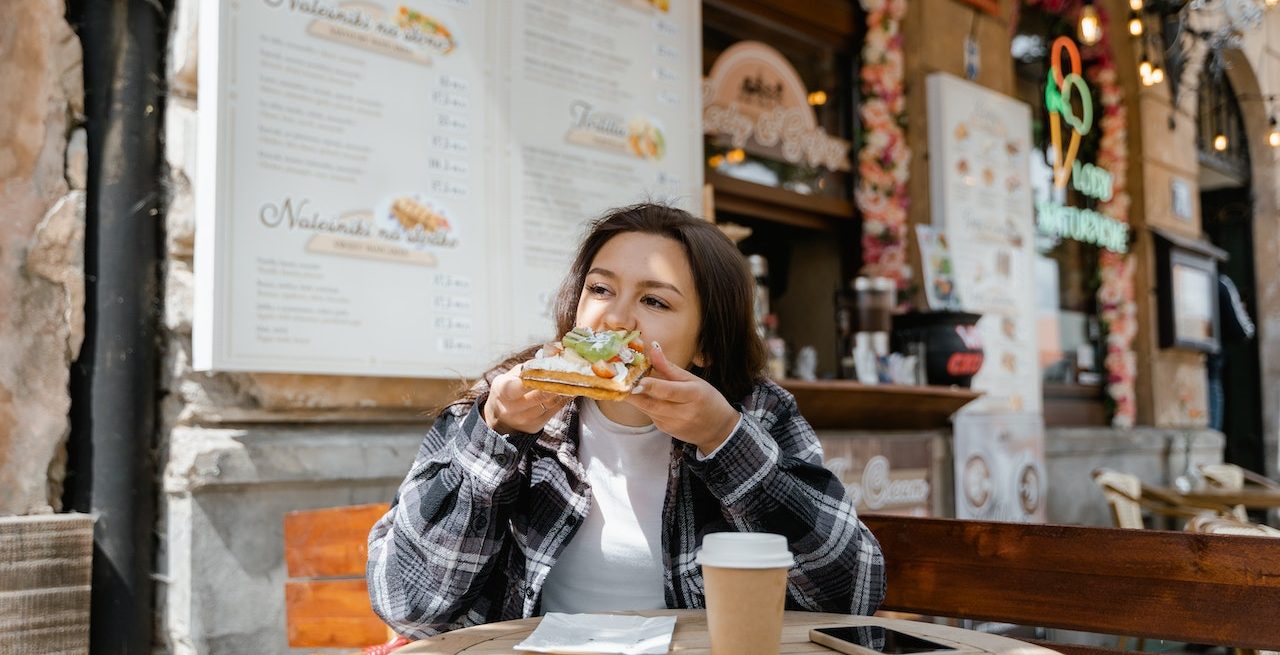What Guests Lose in the Ghost Kitchen Experience
4 Min Read By Mark Plumlee
COVID-19 changed the restaurant industry forever. It took existing trends, like the move to digital and delivery, and accelerated them by years. One of these supercharged changes was the rise of ghost kitchens. For restaurateurs, you can see why the model would be attractive. Operating costs are significantly lower since you don’t need to worry about renting out a large space. You also don’t need to hire wait staff. All you need is a line cook or two to prepare the food. With this simplified business model, you can see how it would appeal to someone looking to get into the restaurant game.
So, ghost kitchens come with many advantages for restaurant owners, but what about the customers? Well there are pros and cons.
A big pro: the food is generally cheaper. Yes, customers have to pay extra for a delivery fee, but the food itself generally costs less because, as we explored above, the restaurants have so much less overhead. Add in the fact that ghost kitchens tend towards the quick service variety of restaurants (burgers, burritos, sandwiches, etc.) and the meals generally wind up being on the cheaper side.
What about the negatives? What do customers lose when the dine-in experience is removed completely from the restaurant business model?
Let’s dig in. Here are the top seven things we customers lose with the rise of ghost kitchens.
1. The Communal Experience
Since humans first evolved to form communities, food has been served as a rallying point for people to gather around and enjoy each other’s company. We’re not meant to enjoy every single meal alone, on our couch, or in front of the television.
The communal experience is what turns good food into a great meal. That’s why it’s so often referred to as sharing a meal. Sometimes you need the other people there, to break bread with and swap conversation.
While ghost kitchens can, and do, facilitate this type of communal food experience (you can generally order family-style options delivered), they also often lead to an increase in solo meals. Seeing people used to be a requirement if you wanted to eat out, and now it’s not. And yes, that’s certainly easier, but you also lose that aspect of shared, communal experience that is so baked into the fiber of eating meals surrounded by other people.
2. A Menu to Hold
Digital menus are great for off-premise ordering and contactless dining. They can help you figure out where you want to eat from the comfort of your couch.
But you also miss out on a crucial aspect of the dining out experience when you forego physical menus for digital ones. There’s something about cracking open a menu, poring over it with a friend, and passing it around the table that you simply cannot capture with a digital menu. There’s a thrill of discovery that you miss out on.
3. A Reason to go Outside
I think we all became a little too comfortable within our abodes over the course of the pandemic. Sometimes you need that extra little push to take a step out the front door and experience the world around you. I know I do.
Dining out gives you that excuse. It makes the process of buying a meal more than a simple transaction wherein you pay money and receive food in your stomach. It can change that process into a chance encounter with a friend at your favorite local restaurant. A refreshing conversation with your favorite bartender. Or a fun adventure where you find a new favorite meal.
4. The Expertise of the Waitstaff
One of my favorite parts of going to restaurants is chatting with the waitstaff and listening to their recommendations. Outside of maybe the chefs, they know the menu better than anyone. They can let you know what dishes they love, what pairs well with what, if there are any specials, etc. They can help foster a more intimate meal experience. They can inform and delight. At the end of the day, they can add a dimension you simply cannot find with a ghost kitchen.
5. The Experience of Being Waited On
On top of their expertise, the waitstaff provide an essential part of the restaurant experience: being waited upon. Not to sound overly bougie, but sometimes, after a long day, it’s nice to sit down at a restaurant and have someone refill my water, ask my drink order, and bring my food out to me.
With ghost kitchens, someone is still bringing your food to you (all the way to your door, in fact) but you lose every other part of the being-waited-upon experience.
6. Spontaneity
Old people like me like to lament the death of channel surfing. Now that everyone has cut their cable, gone is the experience of scrolling through your channel guide and stumbling upon a movie or television show.
The same thing has happened to the restaurant experience with the rise of delivery apps and ghost kitchens. Every choice has to be so intentional. You lose the browsing experience of walking down a street and checking out the menu in various restaurant windows before deciding on one. You lose the ability to open a menu and explore it, or the chance to discuss the menu options with a waitstaff.
When the entire transaction can be done with a few button presses on your phone, you lose that channel-surfing spontaneity that can lead to unexpectedly fun or memorable meals.
7. The Opportunity to Connect with a Local Business
Society these days can feel increasingly fractured. More and more goods reach us through delivery drop offs. We no longer have to venture out into the world for anything. We don’t need to make that connection with the proprietor of whatever it is we’re buying.
Restaurants are essential parts of the community. Outside of the big chains, they are often owned by members of the community. When your only connection to them is through a third-party person who delivers their food, you lose that ability to connect with them on almost any level.
Love them or hate them, at this point, Ghost Kitchens are inevitable. With their stripped down business model, they do pose an interesting opportunity for restauranteurs across the country. And in terms of convenience, they do offer a cheaper and easier way for customers to order takeout.
But when it comes to experience, we definitely lose something essential when we forgo dine-in and choose Ghost Kitchens.


